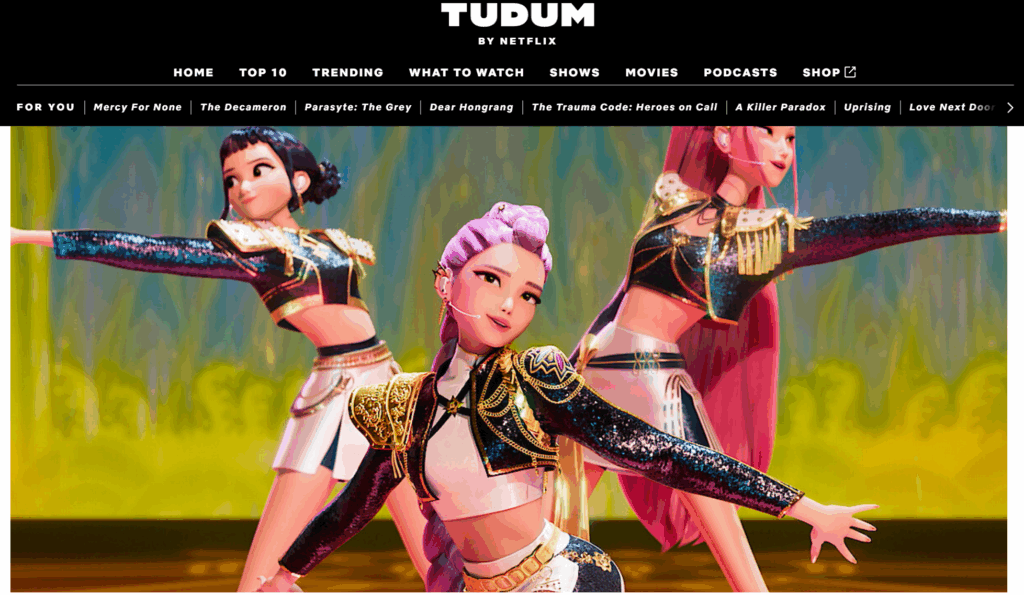Virtual characters are no longer unfamiliar. Hatsune Miku, Kizuna AI, and Lil Miquela have all amassed global fanbases. Yet most of them eventually stalled or faded away.
Then came K-Pop Demon Hunters — a project that broke the mold.
With its stunning visuals, compelling music, deep lore, and immersive storytelling, this project is gaining global attention. What makes it so different from its predecessors?

❌ Where Other Virtual Characters Fell Short:
Great Technology, but Clear Limitations
Many virtual characters were technically impressive but failed to emotionally resonate with fans or offer long-term value.
| Character | Country | Limitations / Reasons for Failure |
|---|---|---|
| Hatsune Miku | Japan | Lacked narrative depth and long-term IP growth |
| Lil Miquela | USA | Criticized as inauthentic; struggled to build emotional connection |
| Seraphine (LoL) | USA | Seen as a marketing gimmick, lacked genuine character |
| Kizuna AI | Japan | Internal team issues, lacked sustainable content planning |
| Aespa’s AI avatars | Korea | Confusion between real and virtual identity hindered fan engagement |
These projects had technical excellence,
but often lacked narratives, character depth, and emotional immersion.
And most importantly, they failed to provide a reason to become a fan.
✅ What Makes K-Pop Demon Hunters Different?
1. From Curiosity to Fandom: The Natural Journey
Virtual characters often feel awkward at first. But K-Pop Demon Hunters flips that script.
You start watching out of curiosity — “K-pop idols hunting demons?”
Then the music grabs your attention.
Soon, you find yourself emotionally invested in the characters’ stories.
By the end of the video, you’re not just entertained — you’re a fan.
This smooth emotional arc is what most past projects failed to achieve.
2. Characters with Depth and Lore
These aren’t just pretty faces.
Each member of K-Pop Demon Hunters has a mission, trauma, and backstory.
They are not just performers — they are warriors with personal reasons to fight.
This gives fans a way to relate, empathize, and stay invested.
3. A World You Want to Explore
Fans aren’t passive viewers.
With hints dropped in trailers, music videos, and social media, the audience becomes a kind of “world-building detective.”
This makes engagement deeper, more interactive — and ultimately more loyal.
🧠 Success Formula: K-Pop Demon Hunters vs. Others
| Element | Typical Virtual Characters | K-Pop Demon Hunters |
|---|---|---|
| First impression | Awkward, uncanny | Intriguing concept |
| Character depth | Flat, one-dimensional | Emotional, narrative-driven |
| Fan role | Passive consumer | Active participant |
| World-building | Shallow or inconsistent | Rich, consistent fantasy lore |
| Content model | Limited to videos/SNS | Multi-platform storytelling |
🌐 More Than Just a Project: It’s an Expandable IP
K-Pop Demon Hunters isn’t just a one-off concept — it’s a scalable IP
with massive potential in games, fashion, webtoons, and brand collaboration.
Areas of Expansion:
- 🎮 Games: Demon-hunting lore is perfect for RPGs or action games
- 👗 Fashion/Goods: Character costumes and designs are merchandise-ready
- 📚 Webtoons/Comics: Strong backstory naturally extends into visual storytelling
- 💄 Brand Collaborations: Ideal for beauty, tech, or food brands
- 🎧 Music & Performance: Full virtual concerts, albums, and ongoing releases
It’s not just a content project.
It’s a next-gen cultural IP platform in the making.
🎯 Conclusion: The Future of Virtual Characters Is About Emotion, Not Just Technology
What made K-Pop Demon Hunters work?
- A compelling entry point (curiosity)
- High-quality music and visuals
- Emotional character depth
- An interactive world fans want to explore
- And above all, a structure that makes you become a fan by the end
In an age flooded with digital faces and AI-generated content,
this project reminds us:
Success in virtual characters doesn’t come from tech alone — it comes from story, emotion, and connection.